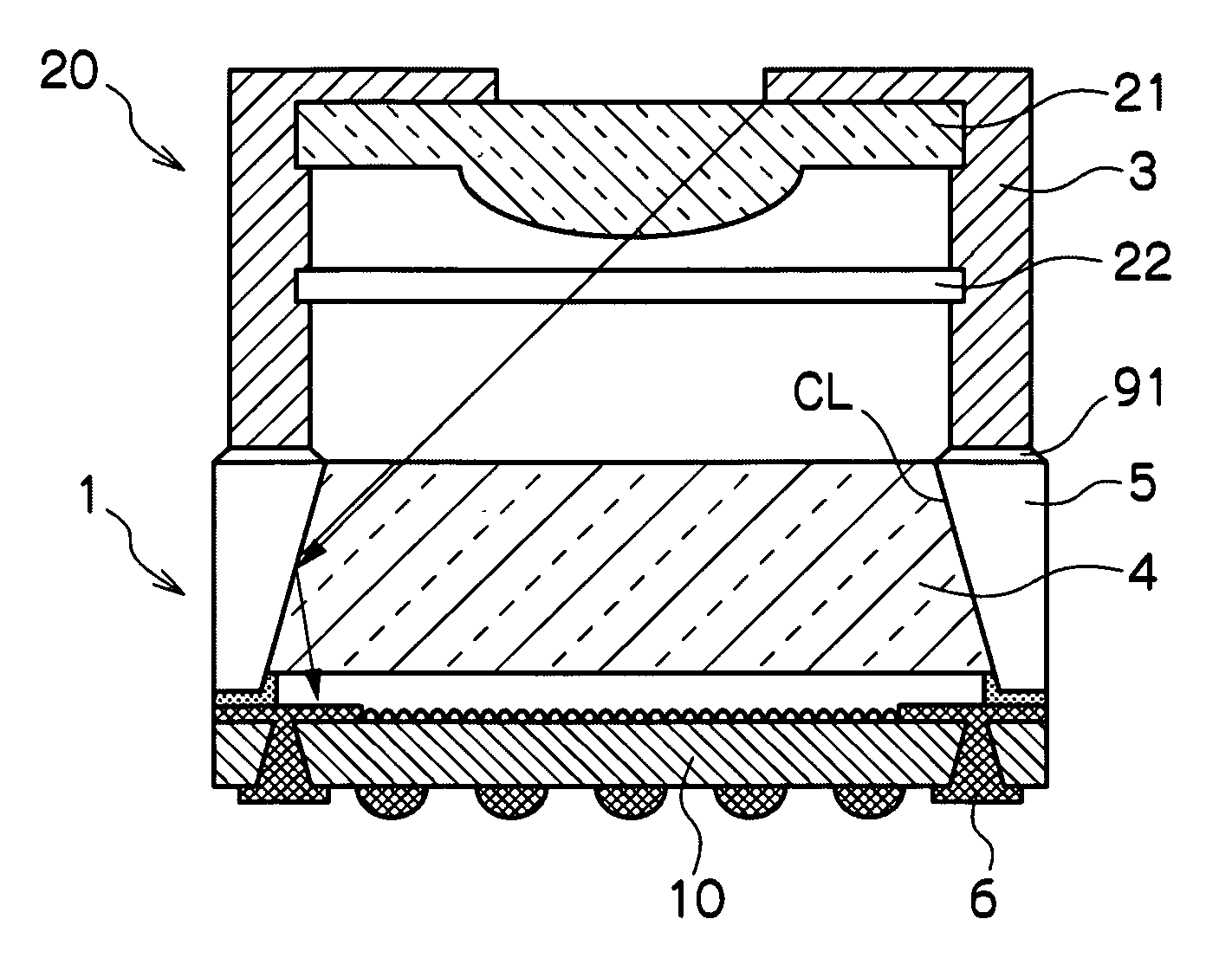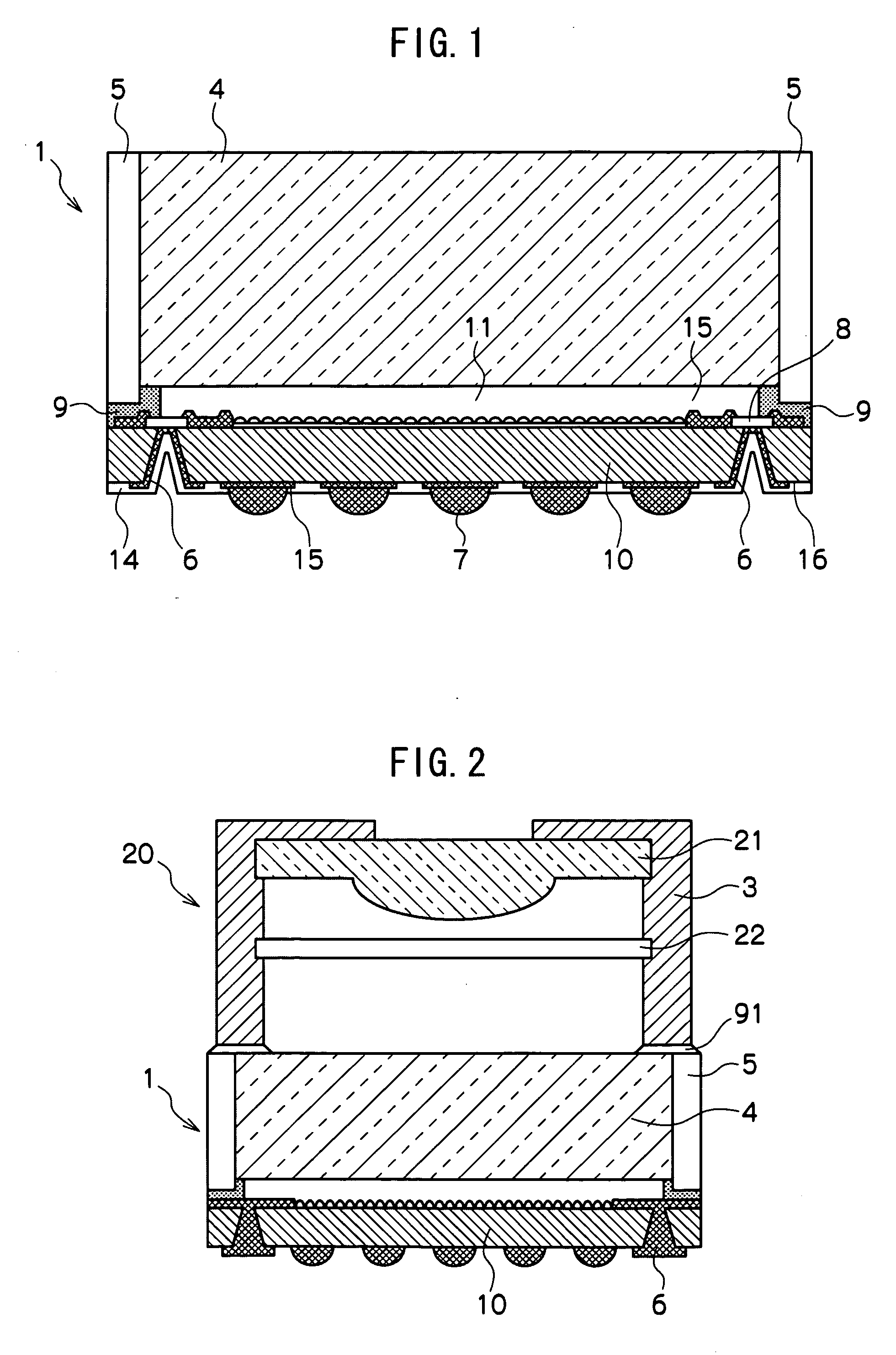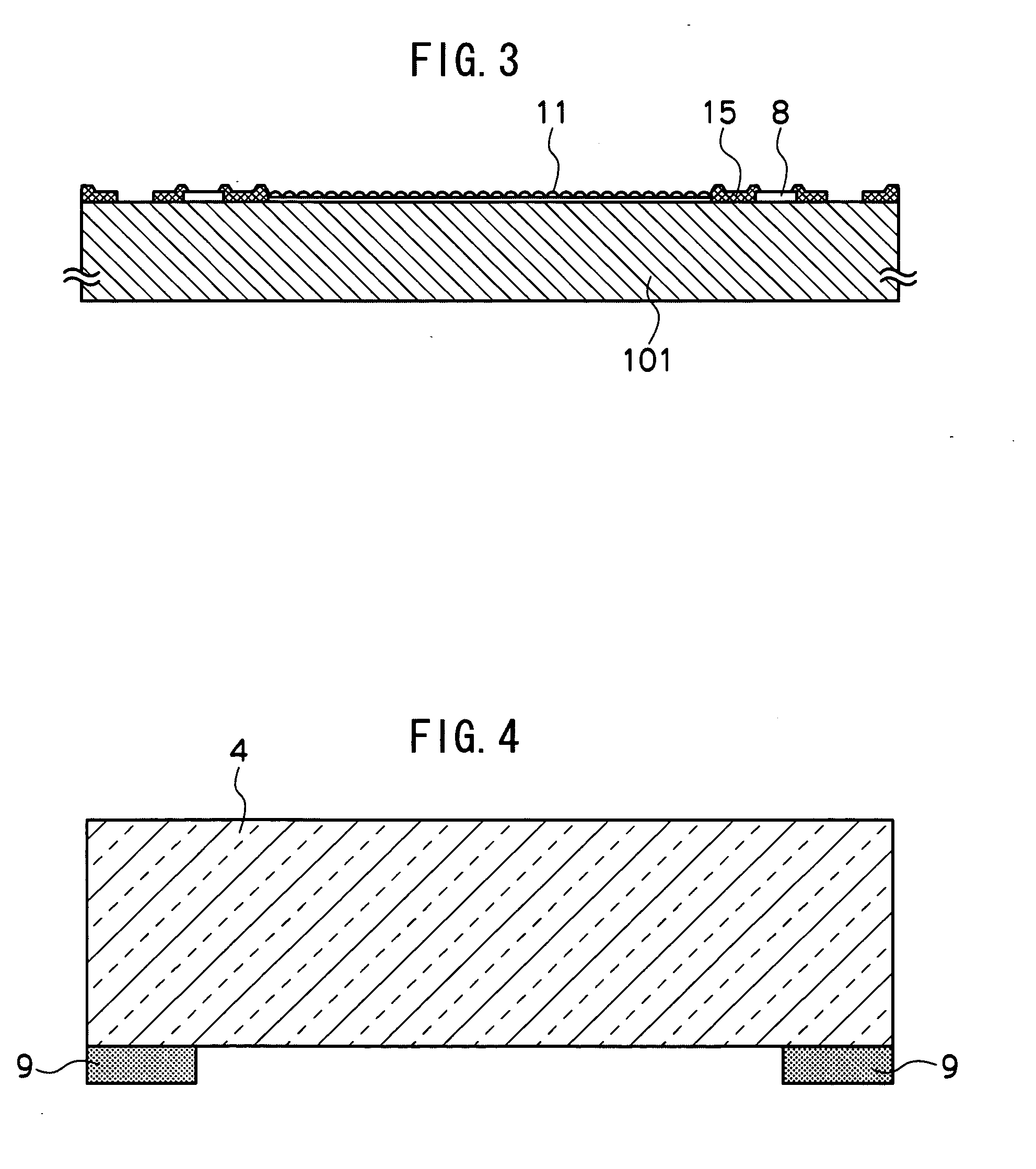Semiconductor device and fabrication method thereof
a technology of semiconductor devices and semiconductor wafers, applied in the direction of basic electric elements, color television, television systems, etc., can solve the problems of affecting the top surface of the covering layer onto which light is incident, limiting the yield of semiconductor devices obtained from one semiconductor wafer, etc., to achieve the effect of reducing the thickness avoiding damage to the semiconductor wafer, and maintaining the strength of the semiconductor wafer
- Summary
- Abstract
- Description
- Claims
- Application Information
AI Technical Summary
Benefits of technology
Problems solved by technology
Method used
Image
Examples
Embodiment Construction
[0053]Explanation will now be given regarding details of a sensor module of a semiconductor device of an exemplary embodiment of the present invention, with reference to the attached drawings. It should be noted that in each of the drawings, where the same configuration element is shown in separate drawings the same reference number is allocated thereto, and detailed explanation thereof is omitted.
[0054]FIG. 1 is a cross-section of a sensor module of a first exemplary embodiment. A sensor module 1 is configured overall including a glass plate 4 that is a light transmitting chip, and a semiconductor chip 10, formed from silicon or the like, to which the glass plate 4 is attached by a bonding layer 9. A UV-curable or heat-curable material is employed as the material of the bonding layer 9.
[0055]A light blocking resin layer 5 is formed on the bonding layer 9, stuck onto the side surfaces of the glass plate 4.
[0056]A photoreceptor portion 11 including photoreceptor elements, such as CMO...
PUM
 Login to View More
Login to View More Abstract
Description
Claims
Application Information
 Login to View More
Login to View More - R&D
- Intellectual Property
- Life Sciences
- Materials
- Tech Scout
- Unparalleled Data Quality
- Higher Quality Content
- 60% Fewer Hallucinations
Browse by: Latest US Patents, China's latest patents, Technical Efficacy Thesaurus, Application Domain, Technology Topic, Popular Technical Reports.
© 2025 PatSnap. All rights reserved.Legal|Privacy policy|Modern Slavery Act Transparency Statement|Sitemap|About US| Contact US: help@patsnap.com



